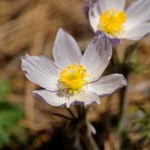
“Water, water, everywhere,
Nor any drop to drink”.
While poet Samuel Taylor Coleridge’s Rime of the Ancient Mariner was referring to the ocean surrounding a ship, the statement can equally apply to the growing scarcity of freshwater, not only for human needs but for the ecosystems that support life on the planet. Water serves numerous utilitarian purposes—it satisfies thirst, it irrigates our fields, it cools our factories and machinery, it serves as habitat for the fish we eat. We use water to treat our sewage and cool our homes, cook our dinners and wash our clothes.
The demand for water for these utilitarian purposes is increasing—generally at a rate of twice population growth, not just in the developing nations but in developed ones as well. Not only is the amount of water available an issue, but its quality as well. An estimated 1 billion or so people in the world lack access to safe, potable water, and, as a result, fostering disease, inhibiting economic development, and reducing quality of life.
Protected areas frequently play an important role in providing high quality water supplies to not only wildlife populations but to humans as well. Half the U.S. population sources its water from publicly administered national forests. Many people, such as me, have bore holes that draw from aquifers refreshed by snow and rain occurring on these forests.
In addition to these utilitarian functions, water plays important symbolic roles in human life. It is often viewed as synonymous with life itself. It serves as the basis for an enormous amount of recreational activity, such as boating, rafting, canoeing, fishing, and waterskiing. In its frozen state it provides the foundation, as snow, for snowmobiling, downhill skiing, cross-country skiing, sledding and other snow sports. As ice on lakes, it is used by anglers in the winter for ice-fishing. And it serves as a backdrop for views, cabins and campsites. In the late 1960s, my wife and I completed data collection for my colleague Dave Lime concerning the use of specific campsites in campgrounds in the Superior National Forest of Minnesota. Dave’s Ph.D. Dissertation demonstrated that campsites with views of water surfaces were much more likely to be used than campsites away from water.
In these many uses of water, protected areas play important roles, and thus how protected areas are managed affects these uses, both utilitarian and symbolic. In decisions concerning how scarce water supplies will be allocated, symbolic uses rarely are adequately considered. Part of this problem is attributed to lack of an agreed upon metric: utilitarian values can normally be measured in financial or economic terms, but the value of a view or the use of water for fishing does not have an equivalent and accepted metric. Managers thus must be prepared to acknowledge that these values occur and that they must be considered on an equal basis with utilitarian purposes.
A more complete discussion of symbolic uses of water can be found in the volume Water and people: challenges at the interface of symbolic and utilitarian values (edited by Roger Clark, George Stankey and myself) for the Pacific Northwest Research Station. This might be useful for those wanting more background. The free download is located at http://www.fs.fed.us/pnw/pubs/pnw_gtr729.pdf.




No comments:
Post a Comment